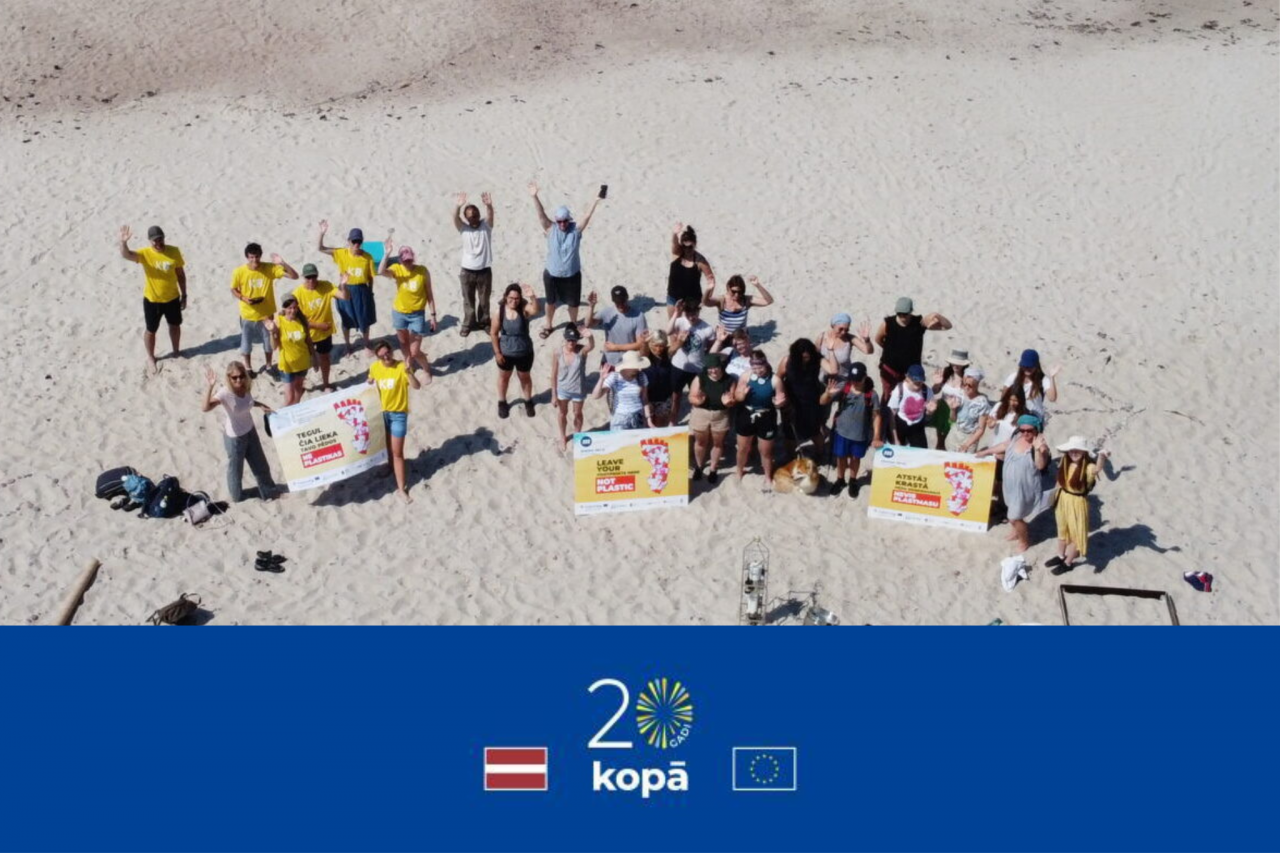The goal of the ESMIC project, part of the Interreg Latvia-Lithuania program, was to develop a sustainable, cost-effective system for identifying, monitoring, and managing marine plastic waste in the marine environment and on the coast.
The lack of physical coastal borders between Latvia and Lithuania means that actions taken in one country can affect the other.
To map plastic pollution in the Baltic Sea and along the coast, Latvian and Lithuanian scientists use several methods, including drone imaging. These data are then compared with satellite images. This way, it is possible to determine which areas are the most polluted, as well as the volume of algae and plastic, which will help municipalities take action to prevent pollution. The scientists' first conclusion is that algae act as a magnet for plastic.
In Latvia and Lithuania, marine algae and plastic accumulate more than in other Baltic Sea countries due to strong winds and geographical location – they are on the eastern side of this relatively enclosed sea.
As part of the project, activities were carried out with the aim of raising public environmental awareness, both by informing the public about the issue of marine litter pollution and by working directly with stakeholders to develop and implement solutions.
Key project activities and results:
A system was developed to improve and integrate solutions for monitoring and managing marine plastic waste in protected natural areas;
A methodology for collecting marine micro-litter (smaller than 5 mm) in the Baltic Sea and coastal areas was developed to assess the potential of macroalgae as a concentrator of micro-litter;
Guidelines for the assessment, monitoring, and reduction of marine plastic waste were created;
Enhanced and improved collaboration for a clean environment by engaging stakeholders, including raising awareness through stakeholder events, promoting cooperation and exchange of experience, and motivating stakeholders to become more involved in marine waste reduction activities (surveys, seminars for stakeholders, and action plan implementation for reducing marine litter).
